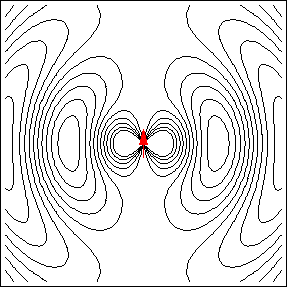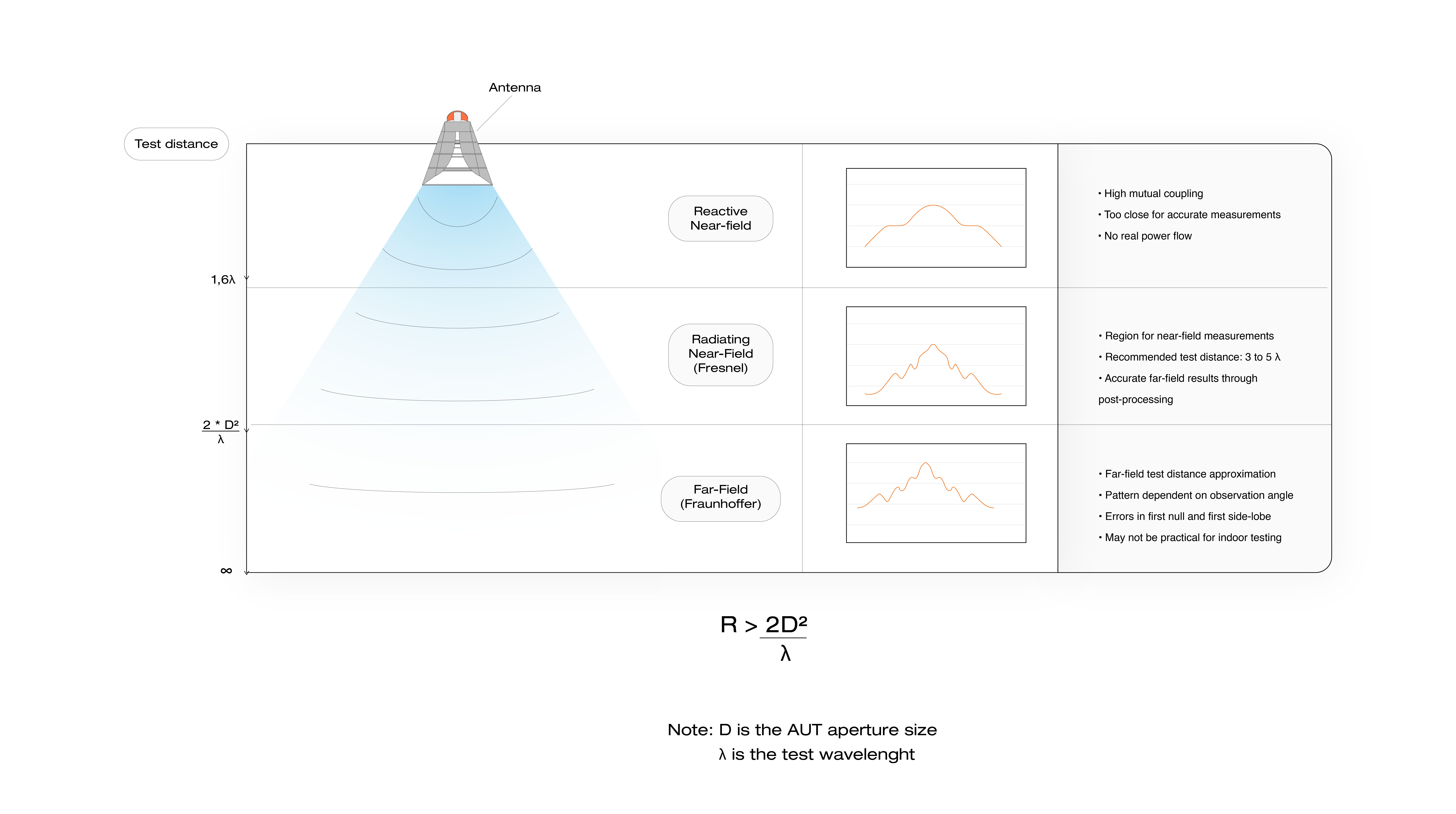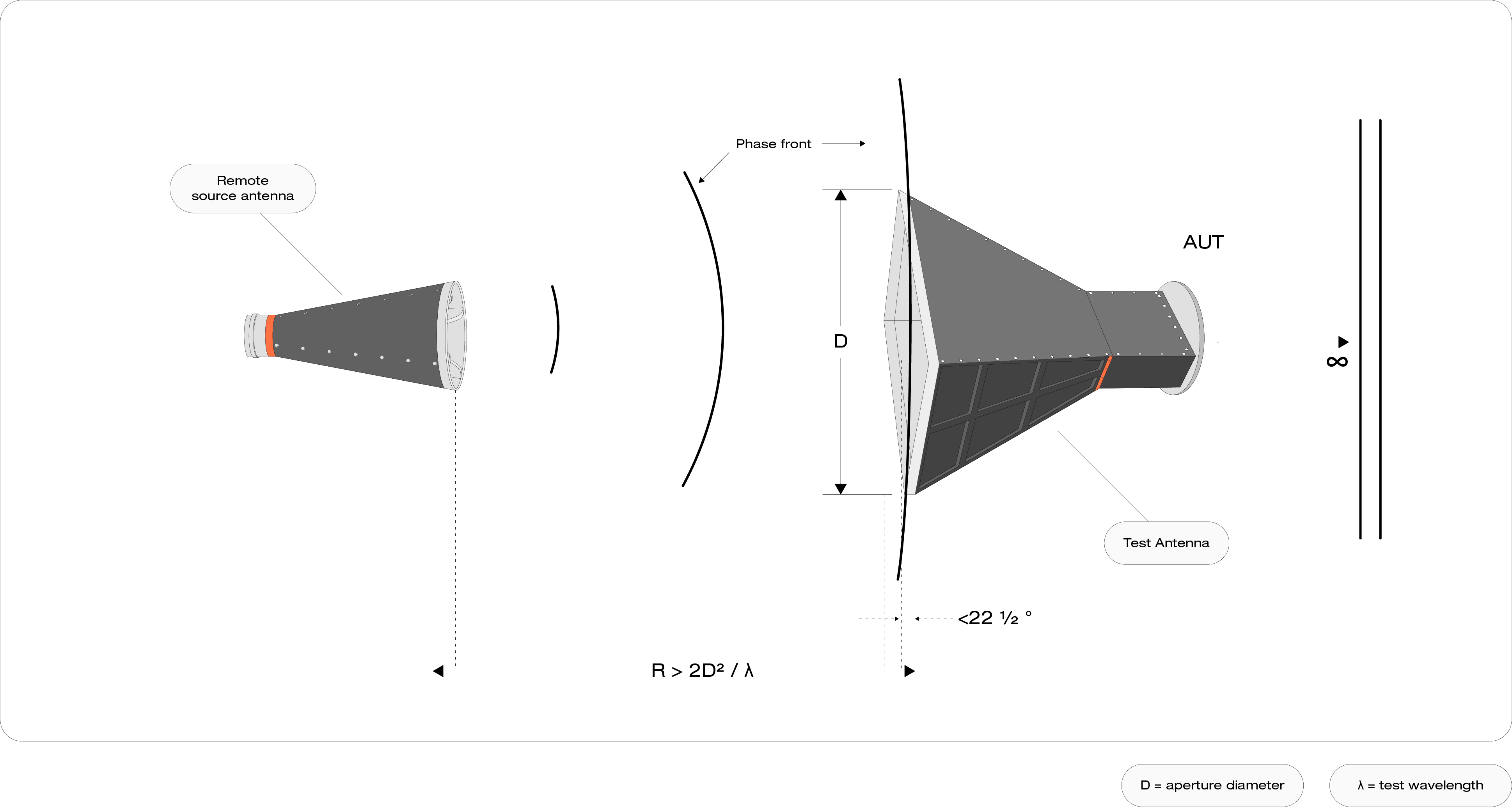Fields from a small dipole antenna

Before discussing how to measure an antenna, we need to know WHAT to measure. So first we need to have a look at how antennas operate. As mentioned previously, antennas are used to transmit and receive electromagnetic energy. To understand how this energy propagates through space we can examine the case of an infinitesimal dipole antenna radiating at a single frequency. If we excite this element with an electric charge, its resulting acceleration will generate an electromagnetic field which travels in space away from the source as shown in the animation above. What is important to note here is that EM fields change as a function of both distance & time!
- A physical phenomenon:
Accelerating charges radiate,
Accelerating charges produce changing electric and magnetic fields. Changing electric fields produce magnetic fields and changing magnetic fields produce electric fields. This interaction between induced electric and magnetic fields leads to propagating electromagnetic waves.
- Imagine an electron undergoing simple harmonic motion about a point in space:
Corresponds to a small dipole antenna
i.e. a Hertzian dipole located at the origin.
Oriented vertically – along the z-axis.
- Animation illustrates the field radiating away from the radiator.
Note: the fields change with distance!
Example – Fields from a small dipole antenna
EM field radiation

Changes from spherical waves to plane waves as it travels away from antenna
EM fields are comprised of both an electric and magnetic component, which are orthogonal to one another. As these field components travel away from their origin, such as an antenna, they spread and traverse from spherical waves (Fresnel zone) to plane waves (Fraunhoffer region), much like water droplet ripples.
Fields near a radiating antenna

The radiating fields of an antenna can be separated into three regions: the reactive near-field, the radiating near-field (Fresnel), and the far-field (Fraunhoffer).
The reactive near-field is located very close to the radiating antenna surface, typically within a distance of a wavelength or two. Within this region, the fields are changing very quickly due to evanescent waves created by surface currents, and do not propagate. At a distance of a couple wavelengths, we enter the radiating near‐field region. Here the EM fields are well behaved but are still represented by spherical waves, and the antenna beam has not yet been fully formed. The near-field region extends to a distance of 2D2/ λ, at which point we can say the fields now resemble plane waves. This region is referred to as the far-field (Fraunhoffer) region and is where the antenna beam has developed.
How far away is the far field?

In practice, antennas generate far fields in 3‐D space which are closely approximated by spherical wave fronts when the observation point is sufficiently far from the source. At large distances from the source antenna, the curvature of the phase front is small at the aperture of the AUT and approximates a uniform plane wave. If the distance from the source is equal or greater than the inner boundary of the far‐field region of the source, Rmin > 2D2MAX/ λ, then the maximum phase difference between the actual incident field and its far‐zone approximation does not exceed 22.5 degrees (i.e. π/8 rad.).
Antenna far‐field characteristics must be measured at a sufficiently large distance between the source antenna and the AUT. This distance must be greater than the larger of the inner limits of the far zones of the transmitting and receiving antennas, i.e., the two antennas must be in each other’s far zones.
The above requirement leads to a major difficulty in antenna measurements – large separation distances are required between the source antenna and the AUT. As the AUT size and frequency increases, so does the required far-field measurement site footprint.
Topic overview

